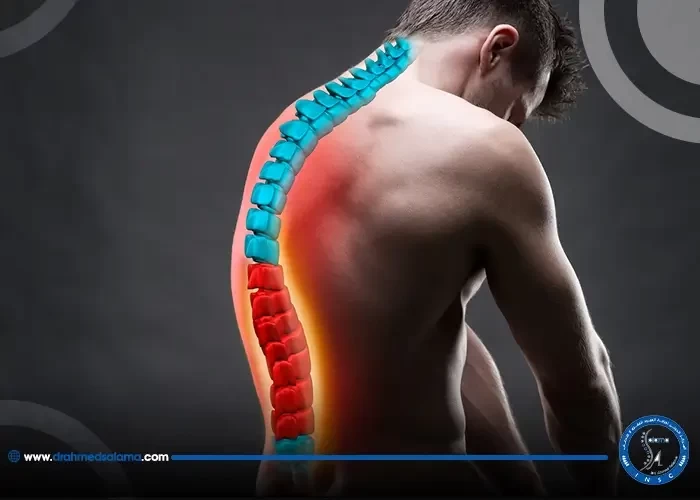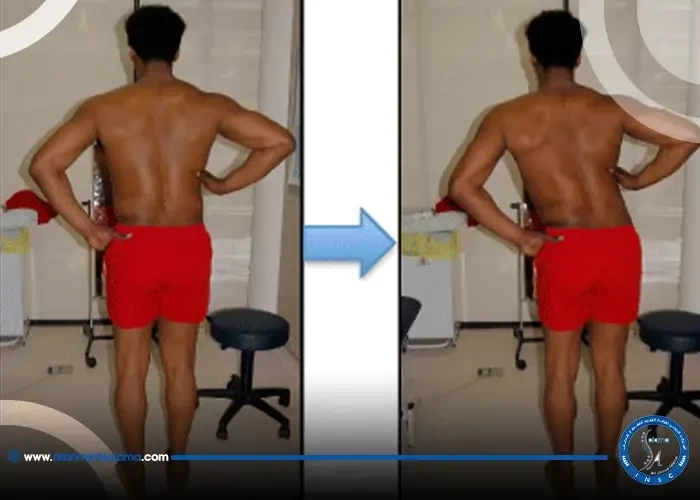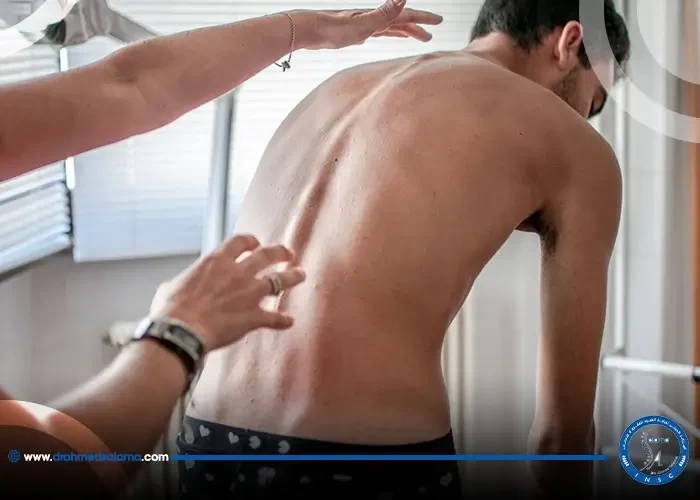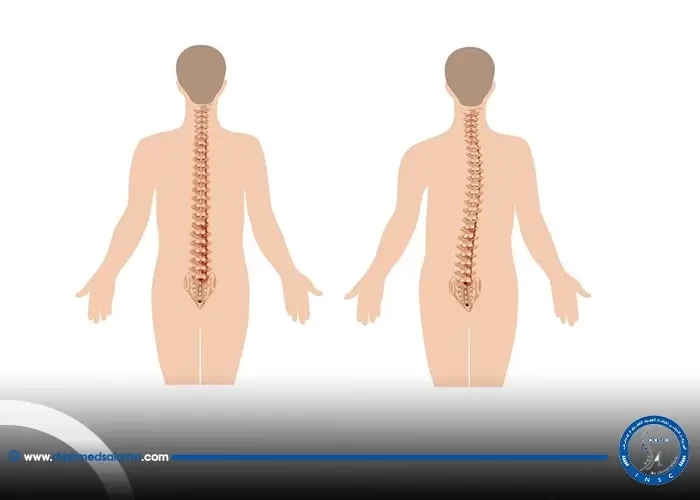Nasr City, 52 El Tayaran Street, in front of the Health Insurance Hospital

Treatment of kyphosis after the age of 18

Kyphosis, also known as a hunchback or round back, is a spinal disorder that affects millions of people worldwide. While it is often associated with elderly individuals, kyphosis can develop at any age, including after the age of 18. In this blog, we will be discussing the various treatment options available for individuals who have developed kyphosis after the age of 18. From physical therapy to surgical interventions, we will explore how kyphosis can be effectively managed to improve one's quality of life and overall health. So if you or someone you know is struggling with kyphosis after the age of 18, keep reading to learn more about the available options for treatment and care.
Understanding kyphosis and its causes
Kyphosis is a spinal condition that affects the curve of the thoracic spine. Mild kyphosis is not typically problematic, but severe cases can cause pain and disfigurement. Understanding the causes of kyphosis is the first step in finding an effective treatment. There are several types of kyphosis, each with their own distinct causes. Poor posture and degenerative changes are common culprits in hyperkyphosis. While osteoporosis treatment can help prevent spine fractures, medications have not been proven to improve hyperkyphosis. Surgical correction may be necessary for severe cases, particularly in congenital kyphosis or Scheuermann's disease. Age and growth potential must also be considered in deciding on the best course of treatment. It's important to work on correcting poor posture in cases of postural kyphosis. Flexibility exercises may also help manage kyphosis progression.
Symptoms and diagnosis of kyphosis
Symptoms of kyphosis vary based on the severity and cause of the condition. Individuals with mild kyphosis may not exhibit any symptoms at all, while those with severe kyphosis may experience back pain, stiffness, fatigue, and difficulty breathing. A doctor will typically diagnose kyphosis by conducting a physical examination and reviewing the individual's medical history. X-rays, CT scans, or MRI images may also be necessary to determine the extent of the curvature and any underlying conditions contributing to the kyphosis. Once diagnosed, treatment options can be explored, which may include posture correction, physical therapy, surgery, medication, or bone health treatments. It is essential to receive proper diagnosis and treatment for kyphosis to prevent potential complications, such as disfigurement and chronic pain.
Treatment options for mild kyphosis
When it comes to mild cases of kyphosis, treatment options can focus on improving posture and strengthening the back muscles. Physical therapy and exercise are recommended to help the muscles better support the spine and maintain proper alignment. In cases of postural kyphosis caused by poor posture, correcting posture habits can lead to significant improvements. Bracing may also be considered for pain relief in adults who cannot undergo surgery. It is important to note that mild cases of kyphosis usually do not require surgery or medication. By focusing on proper posture, exercise, and physical therapy, individuals can manage mild kyphosis and prevent further progression.
Surgery for severe cases of kyphosis
In severe cases of kyphosis, surgery may be necessary. This decision is based on the child's age and amount of growth remaining. Spinal fusion is a potential treatment option for severe rigid kyphosis in older children. Although surgery is more dangerous for correcting fixed kyphosis than any other spinal deformity due to the high incidence of paraplegia, it can yield successful results in cases of kyphosis greater than 70 degrees. While surgery can be an effective treatment, it is important to consider other options and potential risks before making a decision. It is recommended to exhaust all non-surgical treatment options before considering surgery.
Considering age and growth potential in treatment decisions
When it comes to treating kyphosis after the age of 18, considering the individual's age and growth potential is crucial in making treatment decisions. For mild cases of kyphosis, improving posture and performing targeted exercises can often be effective, but more severe cases may require surgical intervention. If the individual is still growing, posterior arthrodesis may be the preferred surgical strategy. It's important to remember that mild kyphosis can improve as growth stops, but severe cases may worsen with age. With all treatment options, it's important to weigh the potential benefits and risks based on the individual's age and potential for continued growth. By taking these factors into account, individuals and their healthcare providers can make informed and effective treatment decisions for managing kyphosis.
Importance of posture correction in postural kyphosis
Postural kyphosis is the most common type of kyphosis and is often caused by poor posture. Improving posture can have a significant impact on correcting postural kyphosis. Physical therapy is typically the first line of treatment for postural kyphosis, and it focuses on exercises and stretches that strengthen the muscles supporting the spine. These exercises can range from simple stretches to more advanced weight-bearing exercises. It is vital to understand that correction of postural kyphosis is most effective when done in conjunction with other treatments. It is crucial to adopt good ergonomic practices, take medication for bone health, and have an overall healthy lifestyle to prevent hyperkyphosis. Age is also an important consideration when deciding on treatment options for kyphosis. For adolescents, spinal fusion may be an option for severe cases of kyphosis. However, adults may not be eligible for spinal fusion, and they may have to rely on other treatments like physical therapy and medication. Therefore, adopting good postural habits early in life and maintaining them throughout adulthood is crucial for preventing and correcting postural kyphosis.
Medication and bone health for preventing hyperkyphosis
Maintaining bone health through medication is crucial in preventing hyperkyphosis. While there is no specific medication approved by the FDA for preventing or treating hyperkyphosis, osteoporosis medication can be helpful in preventing spine fractures and reducing the risk of kyphosis. It is important for individuals with osteoporosis to seek treatment to prevent the progression of kyphosis with age. Additionally, maintaining a healthy diet rich in calcium and vitamin D can help to promote bone health and prevent kyphosis. Proper posture and regular exercise, including flexibility exercises, can also play an important role in managing kyphosis. Together, these strategies can help individuals with kyphosis to improve their spinal alignment and reduce the risk of complications associated with hyperkyphosis.
Progression of kyphosis with age
As individuals age, the risk of developing age-related hyperkyphosis increases due to the natural progression of the kyphosis angle over time. If left untreated, the angle of the curve will continue to increase, potentially causing pain and disfigurement. However, there are treatment options available to prevent further progression and improve the overall quality of life for those suffering from kyphosis. These options may include back braces, physical therapy, medication, and even spinal fusion in severe cases. It's important to consider age and growth potential when making treatment decisions, as well as the potential benefits of posture correction and flexibility exercises. With the help of an experienced medical team and advanced treatment options, patients of all ages can effectively manage their kyphosis and maintain a healthy spine.
Spinal fusion as a potential treatment option
While spinal fusion is a potential treatment option for severe kyphosis, it is not recommended for those under the age of 18 due to its potential to hinder spinal growth. However, for adults, spinal fusion may be an effective approach to correct the deformity and alleviate pain. It involves fusing together two or more vertebrae using metal rods or screws to create a single, solid bone that stabilizes the spine. While success rates vary, spinal fusion surgery can be a great option for those with severe rigid kyphosis who have exhausted non-surgical treatments. It is important to discuss the risks and benefits with a qualified spine surgeon before considering this treatment option.
Role of flexibility exercises in managing kyphosis
When it comes to managing kyphosis, flexibility exercises can be a beneficial treatment option. These exercises aim to stretch and strengthen the muscles and ligaments surrounding the spine, improving posture and reducing the curvature of the spine. It's important to note that while flexibility exercises can be helpful, they should be used in conjunction with other treatment options, such as postural correction, medication, and bone health measures. Moreover, age and growth potential should be considered when making treatment decisions. It's always best to consult an expert to design a personalized exercise program that meets the individual's specific needs and capabilities. Overall, the key to managing kyphosis is a comprehensive approach that includes multiple treatment options tailored to the individual's unique situation.
Does a back belt treat back curvature?
The primary goal of using a back brace is to prevent the curvature from worsening during the growth phase of the spine, but a back brace cannot be considered a treatment on its own.
Does treating back curvature increase height?
Yes, studies have shown that patients who undergo scoliosis correction grow taller after surgery, depending on the degree of curvature and the extent of the surgical correction.






